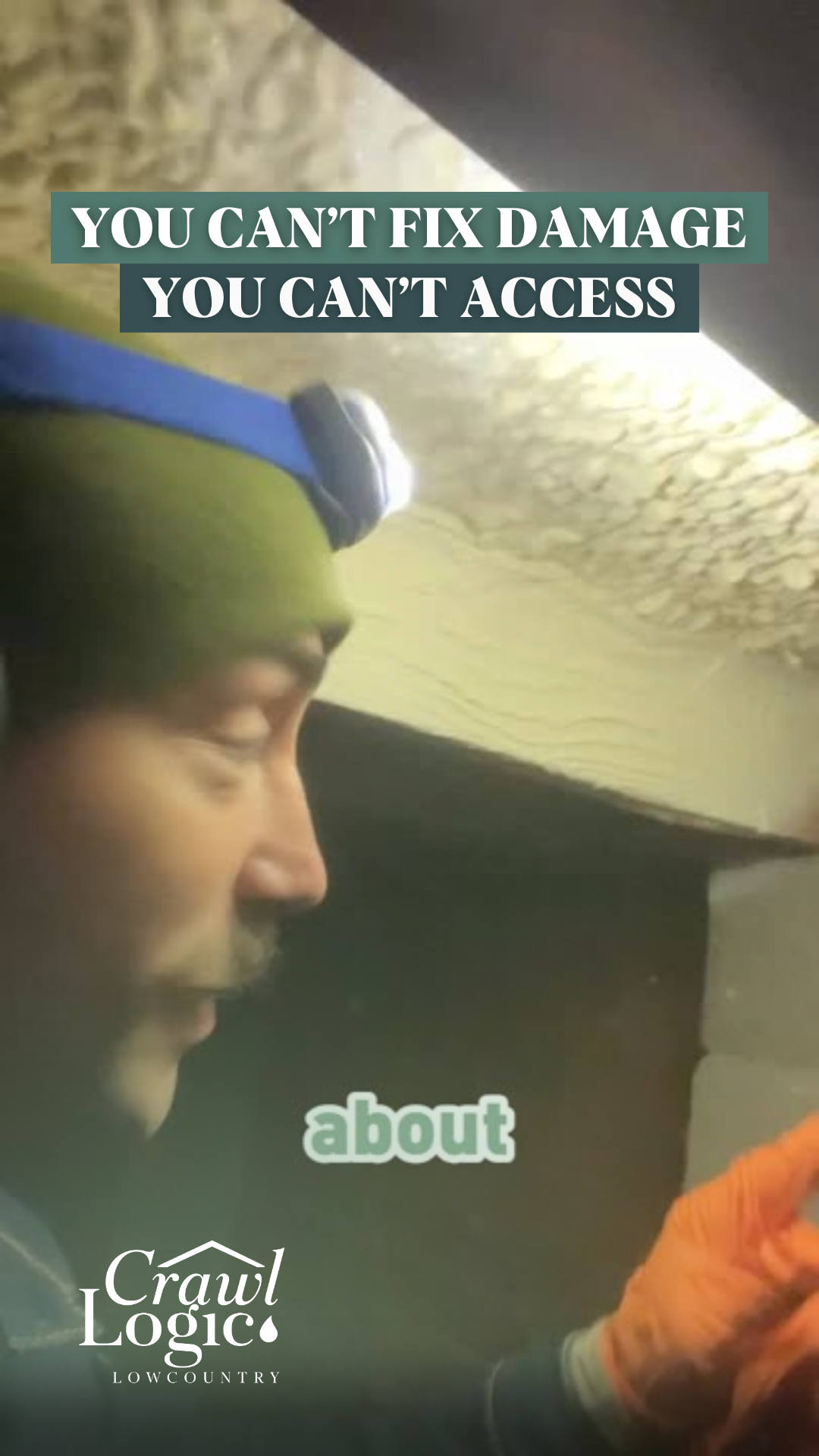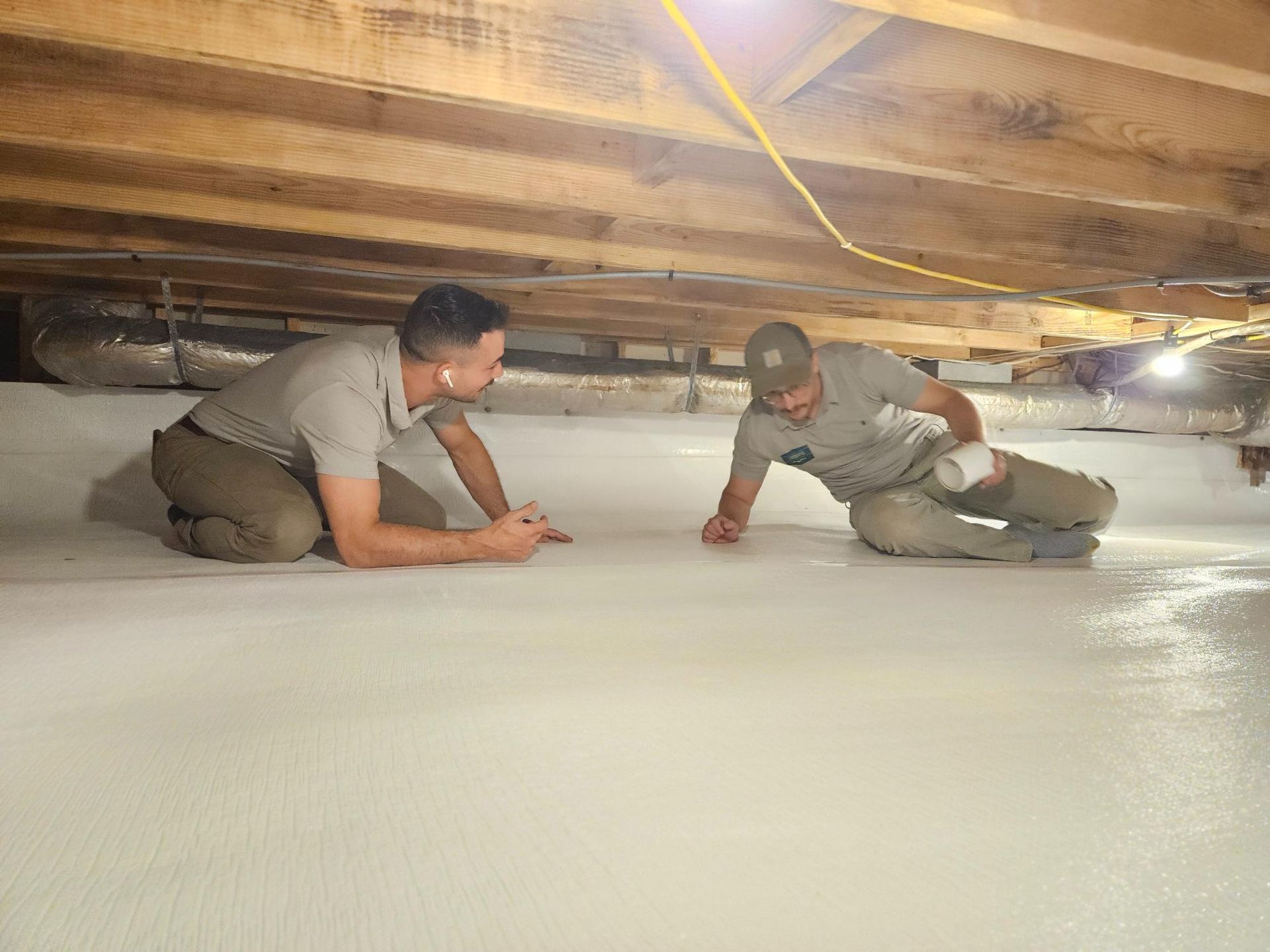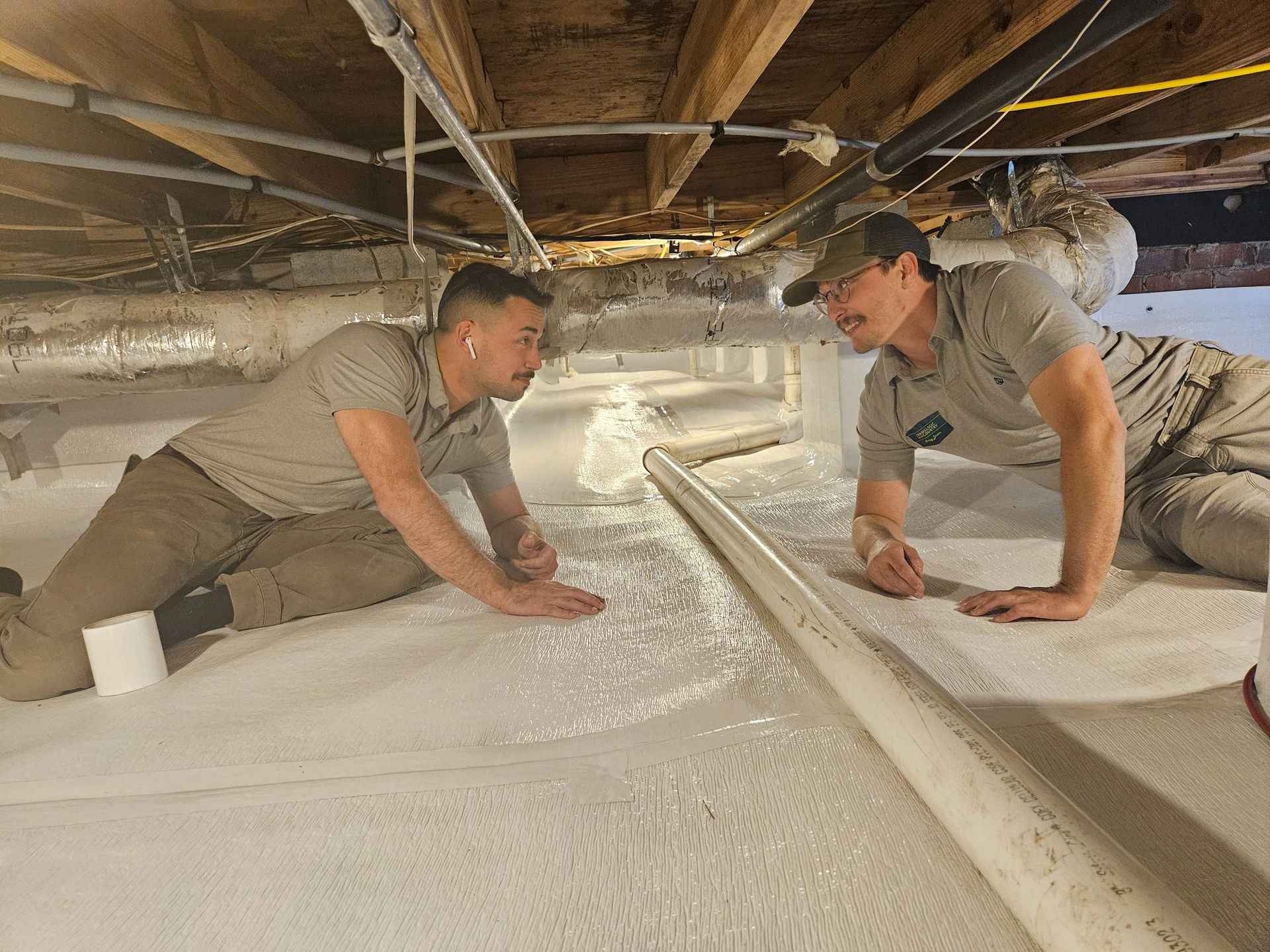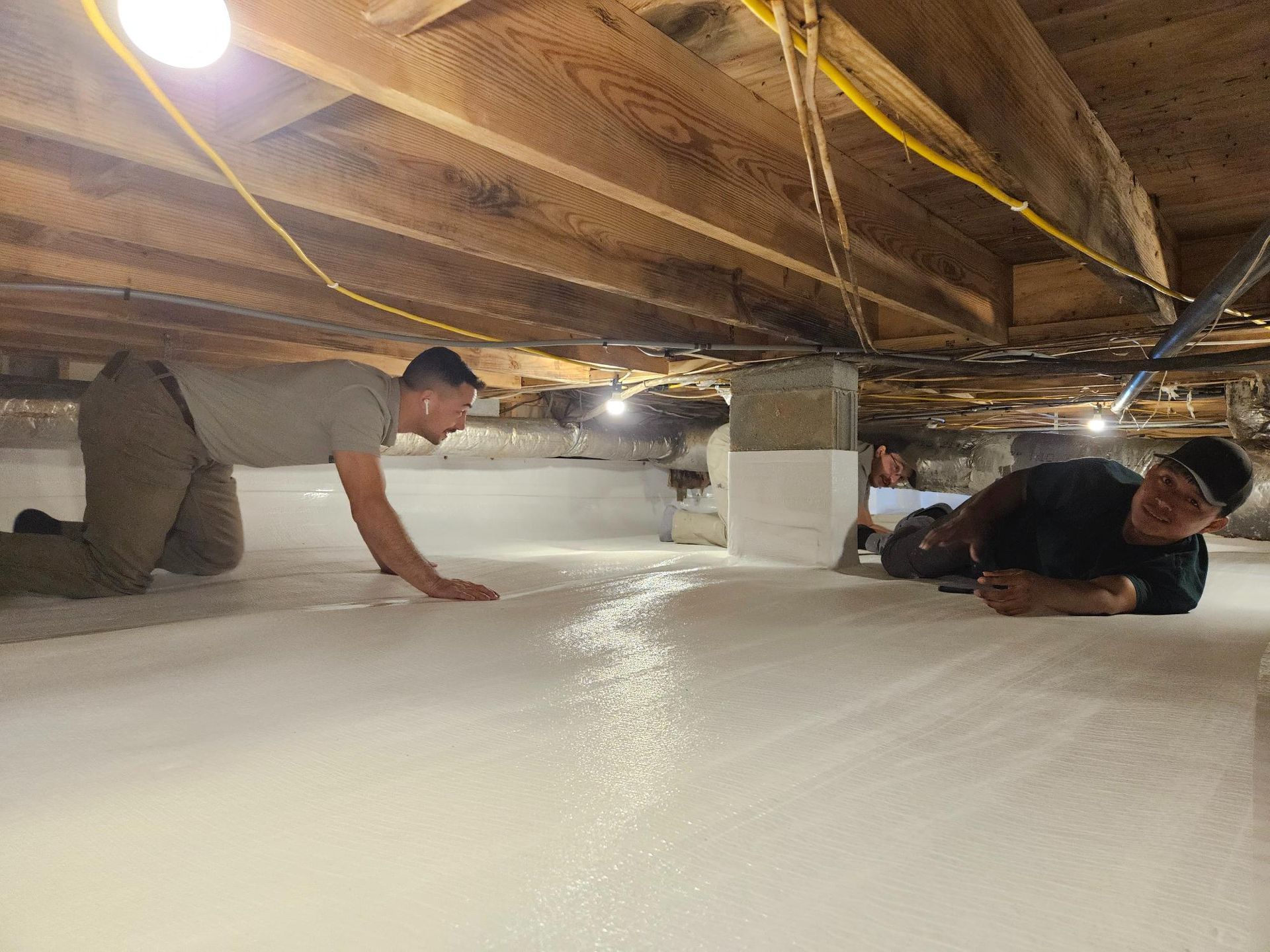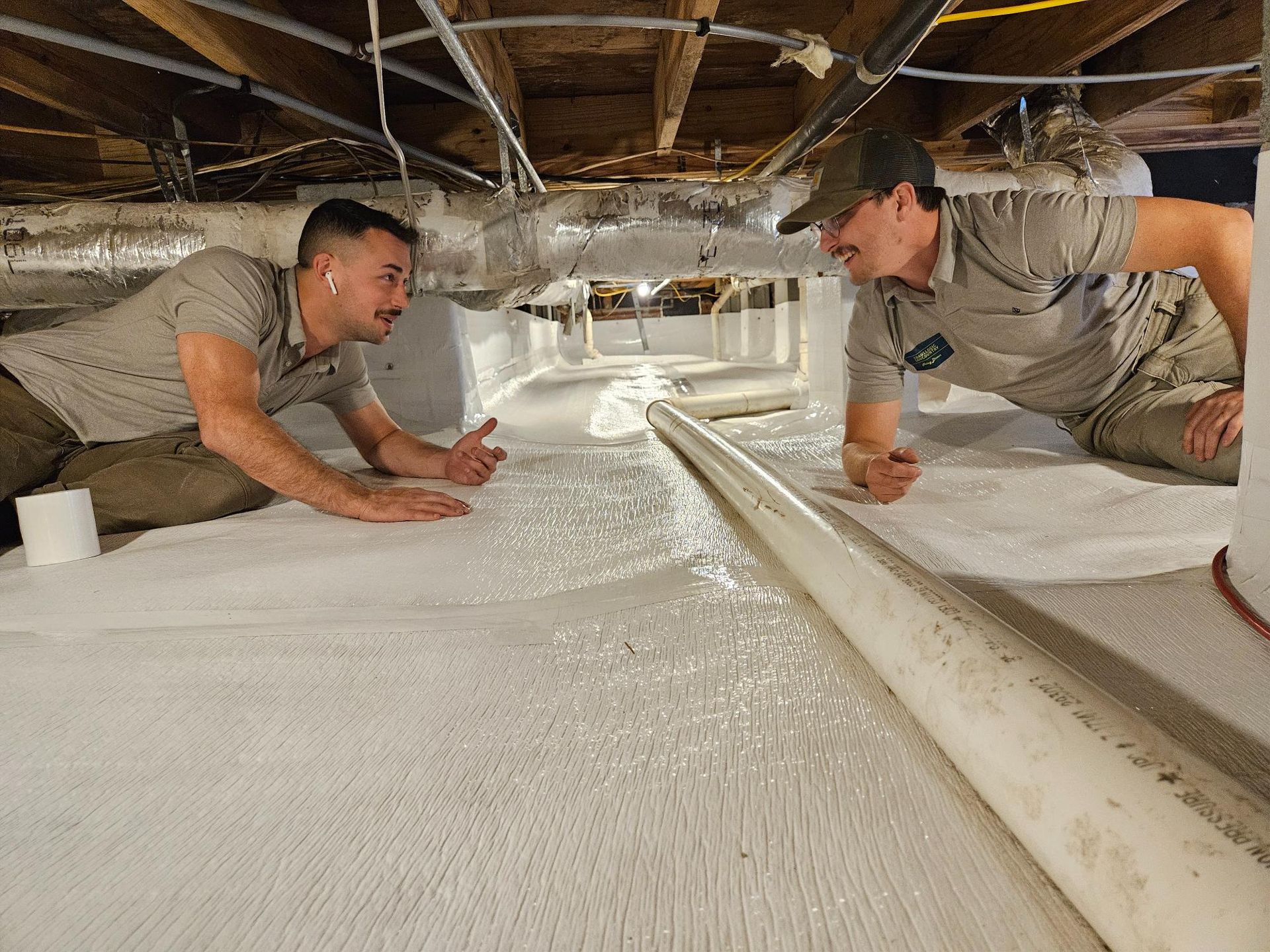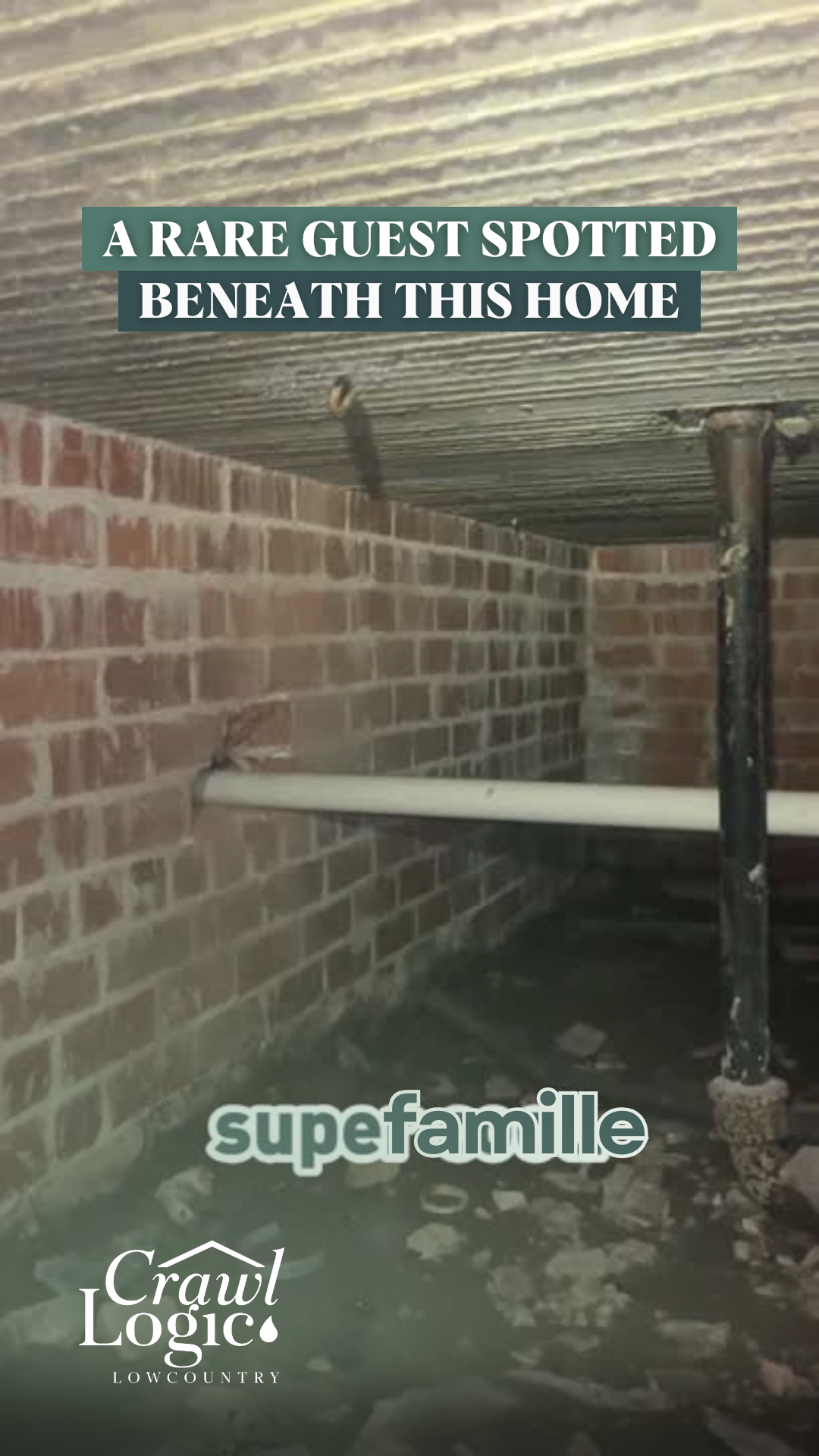Proof That Quality Matters: Charleston Crawl Space Still Perfect After 12 Months
Crawl Logic Lowcountry
When You Can't Do Everything, Do the Important Things Right
A YEAR LATER, THIS BUDGET-CONSCIOUS SOLUTION IS STILL WORKING PERFECTLY
Not every crawl space job can be done exactly the way we'd prefer.
Sometimes we're working with tight budgets, sometimes we're subcontracted through another company, and sometimes homeowners just aren't ready for the full treatment.
That's exactly what happened with this Charleston crawl space project a year ago.
Here's the situation: we were subcontracted by another company to help with this crawl space.
The homeowner needed to control costs, which meant we couldn't do our standard full encapsulation.
Now, usually, I'm not a big fan of partial solutions - but this job proves that when you focus on quality where it matters most, you can still get excellent results.
Welcome to Crawl Logic Lowcountry!
The Initial Challenge
The biggest hurdle wasn't the limited budget - it was making sure we didn't compromise on the elements that really matter. A partial encapsulation means we wouldn't be covering the walls completely, which can be risky if you don't plan for water management. Some companies might just slap up some material and call it a day, but that's not how we operate.
When you're working with constraints like this, you've got two choices: either walk away from the job or figure out how to do it right within the limits you're given. We chose to tackle it head-on, focusing on the most crucial elements that would make the difference between success and failure.
What We Did Right
Even with a partial encapsulation, there are some things you just can't skimp on. First, we used the same high-quality materials we always use - no switching to cheaper options just because it wasn't our standard package. Second, we created these big lips where the material meets the wall. That might not sound like much, but it's crucial - it ensures water flows underneath the encapsulation instead of getting trapped. This is probably the most important part of having any wall coverage at all.
Most importantly, we made sure the dehumidification system was sized right. When you're doing a partial encapsulation, you actually need to hit it harder with dehumidifying power to make up for the incomplete coverage. It's like having a screen door with a few holes - you need to run your AC more to keep the house cool.
The Results After 12 Months
Just checked this crawl space today, and I've got to tell you - it's still absolutely gorgeous. But looks aren't what matter here - it's the numbers. I crawled way back there with my moisture meter, and the readings are impressive: 11-12% moisture content throughout. For those who don't speak crawl space, that's exactly where we want it to be.
These readings aren't just good - they're perfect. And remember, this is after a full year of Charleston humidity doing its best to cause problems. The space is bone dry, the materials look like they were installed yesterday, and everything's working exactly as it should.
Lessons About Quality vs. Compromise
Here's what this job taught us: there's a big difference between making budget-conscious choices and taking shortcuts. You can adjust the scope of work, but you can't compromise on the quality of what you do install. It's like buying a smaller house - you might have less square footage, but you still need solid foundations and a good roof.
The key is knowing exactly where you can and can't cut corners. Quality materials? Non-negotiable. Proper water management? Absolutely essential. Adequate dehumidification? Don't even think about skimping there. Get these fundamentals right, and even a partial solution can give you complete results.
The Only Way Forward
Listen, I see too many companies out there trying to win jobs by cutting every possible corner. But this project proves what we've always known: doing things right the first time, even if you can't do everything, beats doing everything poorly.
Whether you're looking at a full encapsulation or need to work within a tighter budget, the fundamentals don't change. Quality materials, proper water management, and adequate dehumidification aren't just features on a checklist - they're the difference between a crawl space that stays dry for years and one that needs fixing again in six months.
Want to know if your crawl space setup is working like it should? Give us a call. We'll give you honest answers about what's working, what isn't, and what really needs to be done - no upselling, no unnecessary work, just straight talk about getting the results you need.
